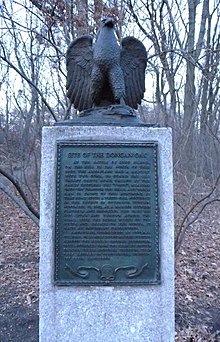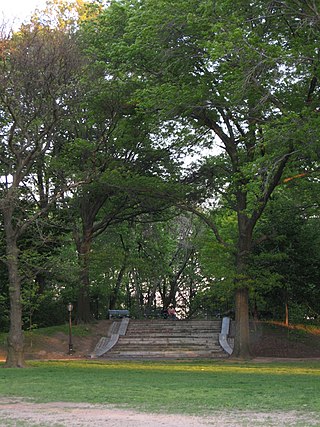
Brooklyn is a borough of New York City. Located on the westernmost edge of Long Island, it is coextensive with Kings County in the U.S. state of New York. Kings County is the most populous county in the State of New York, and the second-most-densely-populated county in the United States, behind New York County (Manhattan). Brooklyn is also New York City's most populous borough, with 2,736,074 residents in 2020. If Brooklyn were an independent city, it would be the third most populous in the U.S. after the rest of New York City and Los Angeles, and ahead of Chicago.

The Battle of Long Island, also known as the Battle of Brooklyn and the Battle of Brooklyn Heights, was an action of the American Revolutionary War fought on August 27, 1776, at the western edge of Long Island in present-day Brooklyn. The British defeated the Continental Army and gained access to the strategically important Port of New York, which they held for the rest of the war. It was the first major battle to take place after the United States declared its independence on July 4, 1776, in Philadelphia. It was the largest battle of the Revolutionary War in terms of both troop deployment and combat.

Prospect Park is an urban park in Brooklyn, New York City. The park is situated between the neighborhoods of Park Slope, Prospect Heights, Prospect Lefferts Gardens, Flatbush, and Windsor Terrace, and is adjacent to the Brooklyn Museum, Grand Army Plaza, and the Brooklyn Botanic Garden. With an area of 526 acres (213 ha), Prospect Park is the second largest public park in Brooklyn, behind Marine Park. Designated as a New York City scenic landmark and listed on the National Register of Historic Places, Prospect Park is operated by the Prospect Park Alliance and NYC Parks.
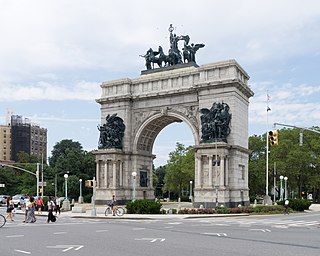
Grand Army Plaza, originally known as Prospect Park Plaza, is a public plaza that comprises the northern corner and the main entrance of Prospect Park in the New York City borough of Brooklyn. It consists of concentric oval rings arranged as streets, with the namesake Plaza Street comprising the outer ring. The inner ring is arranged as an ovoid roadway that carries the main street – Flatbush Avenue. Eight radial roads connect Vanderbilt Avenue; Butler Place; two separate sections of Saint John's Place; Lincoln Place; Eastern Parkway; Prospect Park West; Union Street; and Berkeley Place. The only streets that penetrate to the inner ring are Flatbush Avenue, Vanderbilt Avenue, Prospect Park West, Eastern Parkway, and Union Street.
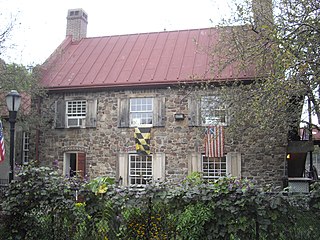
The Old Stone House is a house located in the Park Slope neighborhood of Brooklyn, New York City. The Old Stone House is situated within the J. J. Byrne Playground, at Washington Park, on Third Street between Fourth and Fifth Avenues. Gowanus Creek once ran nearby, but today the southeastern branch of the Gowanus Canal ends 1,300 feet (400 m) west of the house.

Flatbush is a neighborhood in the New York City borough of Brooklyn. The neighborhood consists of several subsections in central Brooklyn and is generally bounded by Prospect Park to the north, East Flatbush to the east, Midwood to the south, and Kensington and Parkville to the west. The neighborhood had a population of 105,804 as of the 2010 United States Census. The modern neighborhood includes or borders several institutions of note, including Brooklyn College.

Windsor Terrace is a small residential neighborhood in the central part of the New York City borough of Brooklyn. It is bounded by Prospect Park on the east and northeast, Park Slope at Prospect Park West, Green-Wood Cemetery, and Borough Park at McDonald Avenue on the northwest, west, and southwest, and Kensington at Caton Avenue on the south. As of the 2010 United States Census, Windsor Terrace had 20,988 people living within its 0.503-square-mile (1.30 km2) area.

The Prospect Park Zoo is a 12-acre (4.9 ha) zoo located off Flatbush Avenue on the eastern side of Prospect Park, Brooklyn, New York City. As of 2016, the zoo houses 864 animals representing about 176 species, and as of 2007, it averages 300,000 visitors annually. The Prospect Park Zoo is operated by the Wildlife Conservation Society (WCS). In conjunction with the Prospect Park Zoo's operations, the WCS offers children's educational programs, is engaged in restoration of endangered species populations, runs a wildlife theater, and reaches out to the local community through volunteer programs.

Flatbush Avenue is a major avenue in the New York City Borough of Brooklyn. It runs from the Manhattan Bridge south-southeastward to Jamaica Bay, where it joins the Marine Parkway–Gil Hodges Memorial Bridge, which connects Brooklyn to the Rockaway Peninsula in Queens. The north end was extended from Fulton Street to the Manhattan Bridge as "Flatbush Avenue Extension".

The Prospect Park station is an express station on the BMT Brighton Line of the New York City Subway. It is located in between Lincoln Road, Lefferts Avenue, Empire Boulevard, Ocean Avenue and Flatbush Avenue in Flatbush, Brooklyn, near the border of Crown Heights, Prospect Heights, Park Slope, and Prospect Lefferts Gardens. The station, which serves Prospect Park and Brooklyn Botanic Garden, is served by the Q train and Franklin Avenue Shuttle at all times and by the B train on weekdays.

Eastern Parkway is a major road that runs through a portion of the New York City borough of Brooklyn. Designed by Frederick Law Olmsted and Calvert Vaux, it was the world's first parkway, having been built between 1870 and 1874. At the time of its construction, Eastern Parkway went to the eastern edge of Brooklyn, hence its name.

The Heights of Guan is a historical name given to a series of hills extending in a ridge along western Long Island in New York State. The ridge extends in an east-northeast direction across the modern-day New York City boroughs of Brooklyn and Queens, with hills varying in height from 100 to 150 feet. The southern slope of the ridge has a relatively steep drop and the northern slope is more gradual. Further to the south is an outwash plain bordered by the Atlantic Ocean. Geologically, the ridge is part of the Harbor Hill Moraine formed 13,000 to 12,000 years ago during the Wisconsin glaciation.

The Maryland 400 were members of the 1st Maryland Regiment who repeatedly charged a numerically superior British force during the Battle of Long Island during the Revolutionary War, sustaining heavy casualties, but allowing General Washington to successfully evacuate the bulk of his troops to Manhattan. This action is commemorated in Maryland's nickname, the "Old Line State." A monument in Brooklyn and multiple plaques were put up in the memory of this regiment and the fallen soldiers.
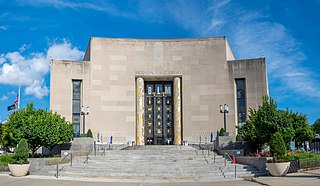
The Central Library, originally the Ingersoll Memorial Library, is the main branch of the Brooklyn Public Library in Brooklyn, New York City. Located on Grand Army Plaza, at the corner of Flatbush Avenue and Eastern Parkway, it contains over 1.7 million materials in its collection and has a million annual visitors. The current structure was designed by the partnership of Alfred Morton Githens and Francis Keally in the Art Deco style, replacing a never-completed Beaux-Arts structure designed by Raymond Almirall. The building is a New York City designated landmark and is listed on the National Register of Historic Places.

The Flatbush Malls are a pair of tree-lined landscaped medians series along several roads in the Victorian Flatbush neighborhood of Brooklyn, New York City. An architecture critic has written that the malls "give the streets an uncommon spaciousness, if not grandeur". The first series was built in the northern part of the neighborhood along Albemarle Road, and extending one block north on Buckingham Road, in the Prospect Park South development of 1899, east of Coney Island Avenue and west of the BMT Brighton Line. This was modeled by the Scottish landscape architect John Aiken on Commonwealth Avenue Mall in Boston, with a design that originally included shrubbery but not trees, and in turn likely inspired the other neighborhood series.


The Concert Grove is a section of Prospect Park, Brooklyn, New York City, that historically functioned as an outdoor music venue. It still serves as a sculpture garden lined with busts of musical figures, largely put up by German American Sängerfest participants and other cultural groups. The Concert Grove also includes the Concert Grove Pavilion, formerly known as the Oriental Pavilion, and adjoins a Lincoln sculpture facing the lake.
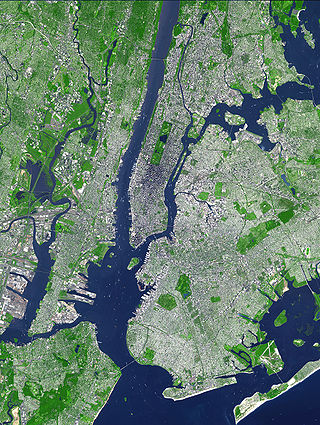
The land comprising New York City holds approximately 5.2 million trees and 168 different tree species, as of 2020. The New York City government, alongside an assortment of environmental organizations, actively work to plant and maintain the trees. As of 2020, New York City held 44,509 acres of urban tree canopy with 24% of its land covered in trees.
Fort Defiance (Brooklyn) was one of the forts constructed by General Nathanael Greene in 1776 to provide for the defense of New York.

